Appearance white powder Molar mass 74.093 g/mol Density 2.21 g/cm³ Soluble in Water | Formula Ca(OH)2 IUPAC ID Calcium hydroxide Melting point 580 °C | |
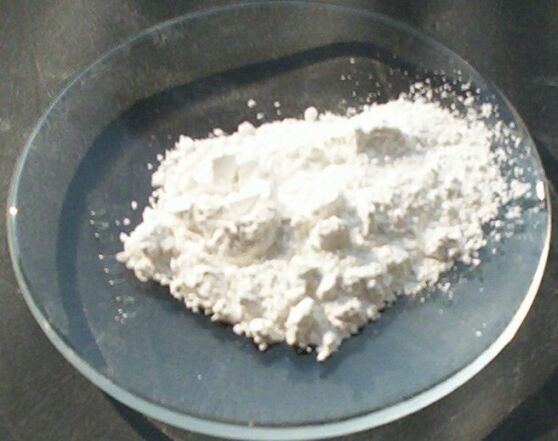 | ||
Thermodynamicdata Phase behavioursolid–liquid–gas | ||
Calcium hydroxide, traditionally called slaked lime, is an inorganic compound with the chemical formula Ca(OH)2. It is a colorless crystal or white powder and is obtained when calcium oxide (called lime or quicklime) is mixed, or "slaked" with water. It has many names including hydrated lime, caustic lime, builders' lime, slack lime, cal, or pickling lime. Calcium hydroxide is used in many applications, including food preparation. Limewater is the common name for a saturated solution of calcium hydroxide.
Contents
- Properties
- Structure preparation occurrence
- Uses
- Food industry
- Native American uses
- Asian uses
- Afghan uses
- Health risks
- References
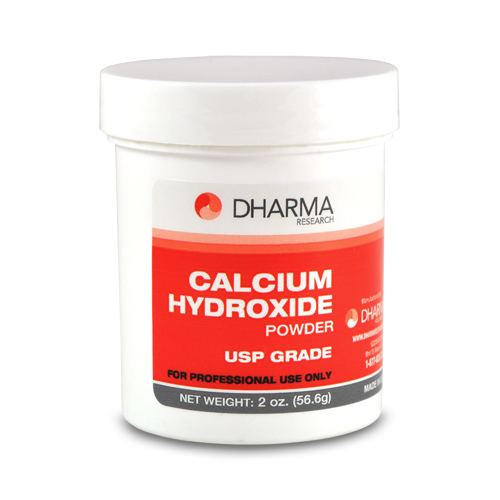
Properties
Calcium hydroxide is relatively insoluble in water, with a solubility product Ksp of 5.5 × 10−6. It is large enough that its solutions are basic according to the following reaction:
Ca(OH)2 → Ca2+ + 2 OH−At ambient temperature, calcium hydroxide (portlandite) dissolves in pure water to produce an alkaline solution with a pH of about 12.4. Calcium hydroxide solutions can cause chemical burns. At high pH value (see common ion effect), its solubility drastically decreases. This behavior is relevant to cement pastes. Its aqueous solutions is called limewater and is a medium strength base that reacts with acids and can attack some metals such as aluminium (amphoteric hydroxide dissolving at high pH) while protecting other metals from corrosion such as iron and steel by passivation of their surface. Limewater turns milky in the presence of carbon dioxide due to formation of calcium carbonate, a process called carbonatation:
Ca(OH)2 + CO2 → CaCO3 + H2O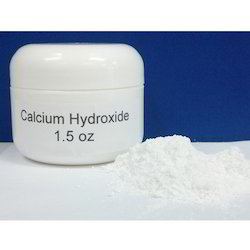
When heated to 512 °C, the partial pressure of water in equilibrium with calcium hydroxide reaches 101 kPa (normal atmospheric pressure), which decomposes calcium hydroxide into calcium oxide and water.
Ca(OH)2 → CaO + H2OStructure, preparation, occurrence
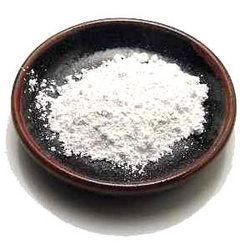
Calcium hydroxide adopts a polymeric structure, as do all metal hydroxides. The structure is identical to that of Mg(OH)2 ("brucite structure"), i.e., the cadmium iodide motif. Strong hydrogen bonds exist between the layers.
Calcium hydroxide is produced commercially by treating lime with water:
CaO + H2O → Ca(OH)2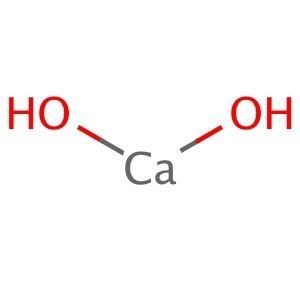
In the laboratory it can be prepared by mixing aqueous solutions of calcium chloride and sodium hydroxide. The mineral form, portlandite, is relatively rare but can be found in some volcanic, plutonic, and metamorphic rocks. It has also been known to arise in burning coal dumps. CaOH has been detected in the atmosphere of S-type stars.
Uses
One significant application of calcium hydroxide is as a flocculant, in water and sewage treatment. It forms a fluffy charged solid that aids in the removal of smaller particles from water, resulting in a clearer product. This application is enabled by the low cost and low toxicity of calcium hydroxide. It is also used in fresh water treatment for raising the pH of the water so that pipes will not corrode where the base water is acidic, because it is self-regulating and does not raise the pH too much.
It is also used in the preparation of ammonia gas, using the following reaction:
Ca(OH)2 + 2NH4Cl → 2NH3 + CaCl2 + 2H2O
Another large application is in the paper industry, where it is an intermediate in the reaction in the production of sodium hydroxide. This conversion is part of the causticizing step in the Kraft process for making pulp. In the causticizing operation burned lime is added to green liquor which is a solution primarily of sodium carbonate and sodium sulfate produced by dissolving smelt, which is the molten form of these chemicals from the recovery furnace.
Food industry
Because of its low toxicity and the mildness of its basic properties, slaked lime is widely used in the food industry to:
Native American uses
In Spanish, calcium hydroxide is called cal. Corn cooked with cal (nixtamalization) becomes hominy (nixtamal), which significantly increases the bioavailability of niacin, and it is also considered tastier and easier to digest.
In chewing coca leaves, calcium hydroxide is usually chewed alongside to keep the alkaloid stimulants chemically available for absorption by the body. Similarly, Native Americans traditionally chewed tobacco leaves with calcium hydroxide derived from burnt mollusk shells to enhance the effects. It has also been used by some indigenous American tribes as an ingredient in yopo, a psychedelic snuff prepared from the beans of some Anadenanthera species.
Asian uses
Calcium hydroxide is typically added to a bundle of areca nut and betel leaf to keep the alkaloid stimulants chemically available to enter the bloodstream via sublingual absorption.
Afghan uses
It is used in making naswar (also known as nass or niswar), a type of dipping tobacco made from fresh tobacco leaves, calcium hydroxide (chuna), and wood ash. It is consumed most in the Pathan diaspora, Afghanistan, Pakistan, India, Bangladesh and also in Sweden and Norway. Villagers also use calcium hydroxide to paint their mud houses in Afghanistan, Pakistan and India.
Health risks
Unprotected exposure to Ca(OH)2 can increase health risks, so it should be limited. It can cause severe skin irritation, chemical burns, blindness or lung damage. See MSDS.
